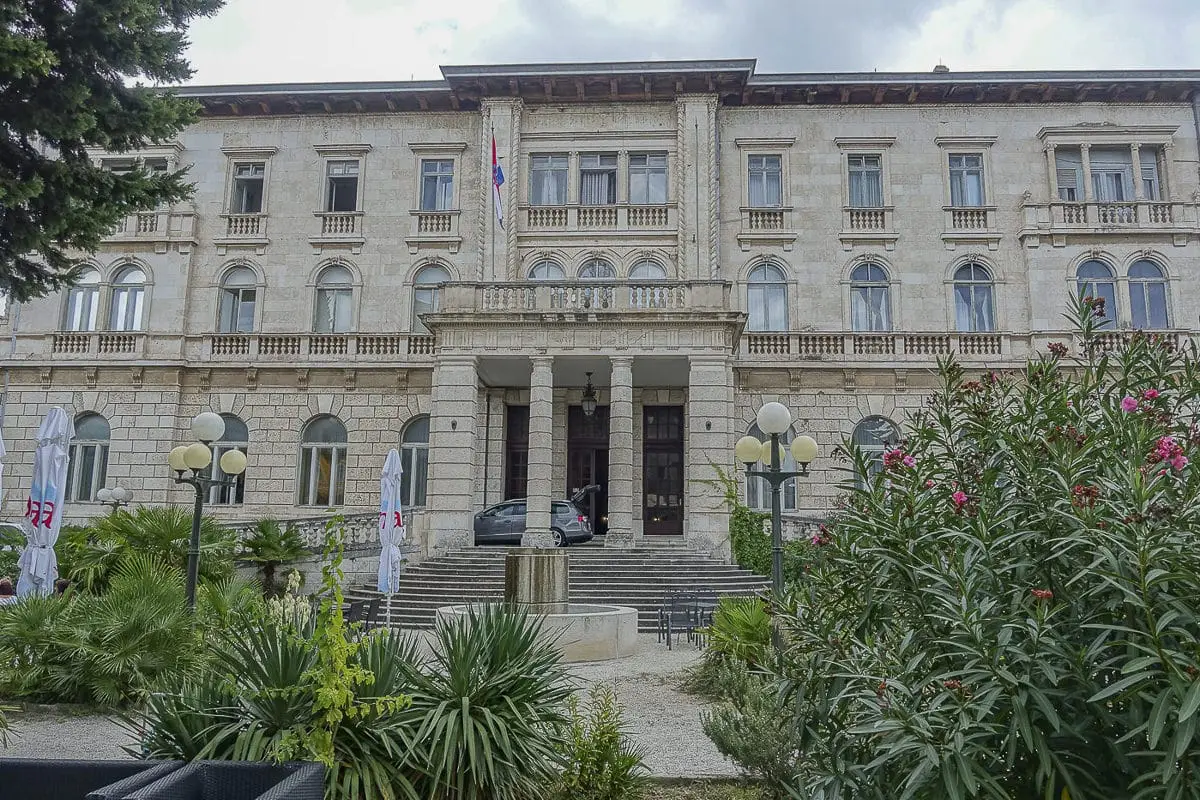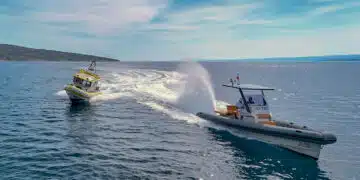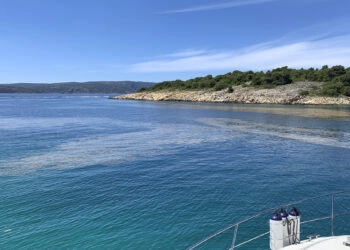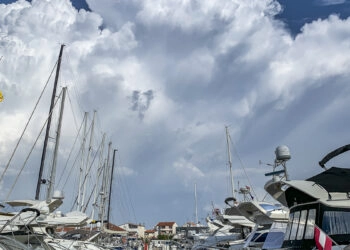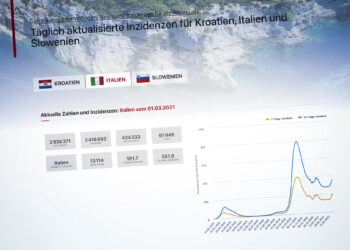Austria and the Navy – you have to go back in history books to find what you are looking for. But unlike many other nations, Austrians have a much more differentiated, positive approach to their history. That is why the organizer, Wolfgang Siebenhandl, does not want to see the first ball of this kind as an event for the old-timers, but rather to convey to the participants, in a relaxed and solid atmosphere, the influence that the behaviour of his ancestors in Europe, especially in Pula, Croatia, has left behind. Although the former teacher and active sailor can draw on a profound knowledge of history, the event should have nothing in common with a lesson: “My goal is to make history comprehensible on existing objects and at the same time to maintain the Austrian Ballhaus tradition”, says Wolfgang Siebenhandl about the ambitious project.
[dimage url=”https://www.sea-help.eu/wp-content/uploads/2019-10-14_news_seahelp_360-grad_seahelp_news_silvesterball-pula_segler_panorama-1-scaled.jpg” ontrol=true zoom_level=”20″ anim_speed=”-0.5″ auto-rotate=true]Viennese waltz in Pula, Croatia – in this decorated ballroom in the Viennese Ringstrasse style, the ball culture [Ballhaus is strictly speaking the name of a sports hall that was designed for ball games. It was not until the end of the 19th century that it was sometimes used for dancing purposes]. The ballroom is now being revived, as Austrian naval officers danced here with their ladies in three-quarter time.
What tourists who, in a “pig’s gallop”, tick off the usual travel guide destinations in Croatia and immortalize them on their cell phones so that the images they have just taken disappear forever and ever into one of the countless cloud memories is ultimately the overriding historical background that made such motifs possible in the first place. The fast-moving generation Facebook & Instagram, which seems to be inclined to get out when the word “historical” is mentioned, should nevertheless continue reading, because history and its traces can be quite exciting – at least when it is not taught in a teacher-like manner and later graded.
Many will wonder why visitors to Croatia are so often reminded of Austria. History provides the answer: as early as 1797, Veneto and today’s Dalmatia fell to Austria as part of the Campoformio peace treaty as compensation for the loss of territory of the Austrian Netherlands, today’s Belgium and Luxembourg. From 1867 to 1918, today’s Croatia was part of the Austro-Hungarian Empire, the second largest country in Europe after the Russian Empire (1908). And this influence left its traces, which are still clearly visible today, in the form of representative buildings, which are still in use, just like the infrastructure created at that time. Cities such as Pula or Opatija, once the place of longing of the powerful of the imperial and royal k.u.k. monarchy, bear impressive witness to how the enormous economic power of the Dual Monarchy at that time contributed to its construction and development.
The stone witnesses from that era are still present, are still used for other purposes and remind us, as if literally carved in stone, of a time when Austria and Hungary ruled almost all of Europe. Especially in Pula, the main port of the Austrian Navy, the traces are still omnipresent. The Ulyanik shipyard, which hit the headlines precisely because of financial difficulties, still today gives as its founding date December 9, 1856, the day on which Emperor Franz Joseph I laid the foundation stone for the expansion of the port of Pula. Whether it is the railway connection via Trieste to Vienna or the expansion of the road network, or the numerous stately villas and administrative buildings – Austria’s influence on the development of the region is clearly evident and underlines that Pula consists of more than just the Colosseum.
[dimage url=”https://www.sea-help.eu/wp-content/uploads/2019-10-14_news_seahelp_360-grad_seahelp_news_silvesterball-pula_segler_panorama-2-scaled.jpg” ontrol=true zoom_level=”20″ anim_speed=”-0.5″ auto-rotate=true]The former k.u.k. Naval Officer’s Casino in Pula is always worth a visit – also because of the contemporary pictures and writings dedicated to the public in a separate room.
One can only advise interested visitors to walk in the footsteps of the imperial and royal k.u.k. monarchy in Pula, there is still a lot to discover here, even if the comparatively rather young state of Croatia concentrates more on its own history. And the buildings from that time offer – to draw the bow back to the “mobile phone generation” – thoroughly interesting photo motifs that do not deserve to disappear in the nirvana of storage media.
Here is the program:
Sailors New Year’s Eve Ball on 31.12.2019 in the former k.u.k. Naval Officer’s Casino in Pula.
Ball dress code
ladies | long evening dress, modern or historical
Men | black suit, tuxedo, tailcoat or historical uniform
Total costs according to offer per person
from Linz, Vienna | € 370,00
from Hartberg, Gleisdorf, Graz | € 350,00
SeaHelp members receive a 10 % discount
For booking according to offer (on request also without transfer and/or hotel) click here.
Arrangement
30.12. 2019
in the morning bus transfer from Vienna, Linz, Hartberg, Gleisdorf, Graz, Lebing to Pula
Dinner with live music
Overnight stay in Hotel Pula ***
31.12.2019
Breakfast at the hotel
Guided city tour or harbour tour
Bus transfer from the hotel to the ball
19:00 Gala Dinner
21:00 Ball opening music E4 – Ball orchestra
24:00 Midnight interlude by Dance-Austria
Happy New Year
The Naval Museum is open all evening.
Overnight stay at the hotel (transfer from the ball to the hotel every half hour)
01.01.2020
Breakfast
Journey home
(02.01.2020 With a sufficient number of interested people a journey home on 02.01.2020 is also possible: extra charge 60€ on basis HP/person)
[dimage url=”https://www.sea-help.eu/wp-content/uploads/2019-10-14_news_seahelp_360-grad_seahelp_news_silvesterball-pula_segler_panorama-3-scaled.jpg” ontrol=true zoom_level=”20″ anim_speed=”-0.5″ auto-rotate=true]A touch of imperial and royal k.u.k. monarchy still wafts through the corridors of the former naval officer’s casino.


